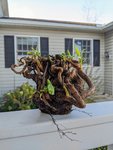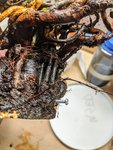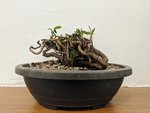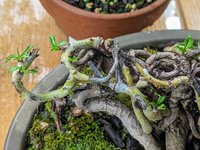canoeguide
Chumono


This clump of root suckers was growing around the base of a landscape tree and had been covered by plastic and mulch for at least 1 year, which has led to the growth of very curvy and tangled shoots. While sawing off this clump and other similar growth from the soil around the landscape tree, I noticed that after this was cut off it still had some roots and might be interesting. Knowing the invasive and hardy nature of Callery/Bradford pear, I decided to pot this up and see if it might survive. I dusted the entire base with rooting hormone and secured it using screws and wire.



What can I do to improve the development of roots and success of this?




